Sometimes referred to as the "greatest lawman of the 20th century," former Texas Ranger Frank Hamer not only took on Bonnie and Clyde but also the KKK and lynch mobs.
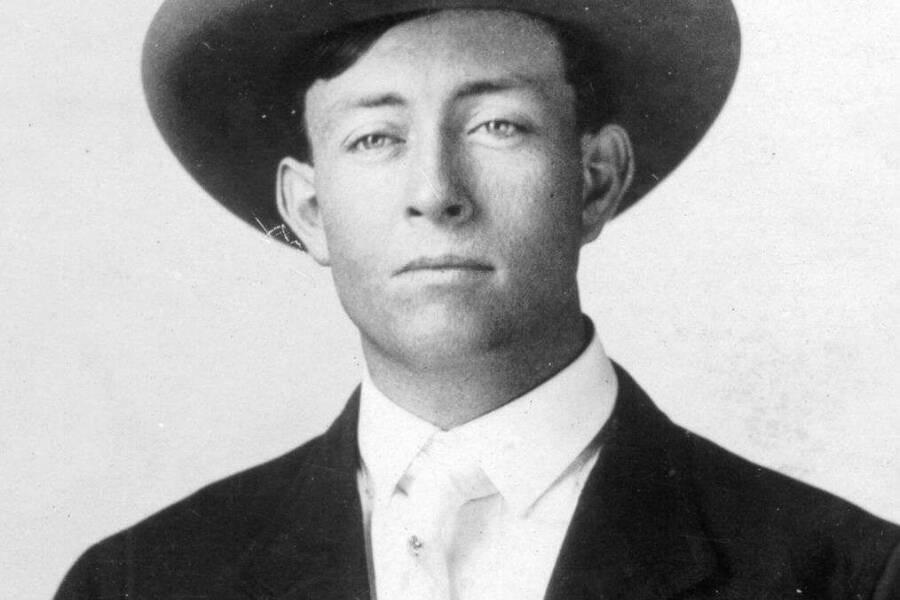
Public DomainFrank Hamer was famous for taking down Bonnie and Clyde, but he also ruthlessly pursued the Ku Klux Klan, broke up lynch mobs, and even helped investigate Lyndon B. Johnson’s 1948 Senate campaign.
Texas Ranger Frank Hamer’s life was a tapestry of daring pursuits, fueled by an unwavering commitment to justice. Called the “greatest lawman of the 20th century” by biographer John Boessenecker, Hamer is the man credited with ending the notorious crime spree of Bonnie and Clyde, the infamous duo whose names are etched in the collective memory as much for their romance as for their ruthless crimes.
However, Hamer’s career with the Texas Rangers spanned nearly three decades and saw him facing off against more than just the notorious gangsters. He also led the charge against lynch mobs and the Ku Klux Klan in Texas. And in 1948, he helped former Texas governor Coke Stevenson blow the lid wide open on fraudulent ballots cast in favor of Lyndon B. Johnson.
That said, his career wasn’t without controversy.
The Early Life Of Frank Hamer, From Ranch Wrangler To Texas Ranger
Francis Augustus Hamer was born on March 17, 1884 in Fairview, Texas to Franklin Augustus, a blacksmith, and Lou Emma Hamer. The couple had six sons, four of whom would later go on to be Texas Rangers.
Frank Hamer attended school up through the sixth grade before ending his education. Still, from an early age, Hamer displayed a high level of intelligence and a remarkable photographic memory, expressing a particular interest in Texas history. He was fascinated with the Texas Rangers, as well as the Native American tribes in the region.

NetflixKevin Costner portrayed Frank Hamer in the series The Highwaymen..
As a young boy, Hamer worked for a time in his father’s blacksmith shop. He eventually picked up work as a wrangler. Surprisingly, this was how he first got into law enforcement. In 1905, Hamer was working on a ranch in West Texas when he managed to catch a horse thief.
When he handed the man over to the local sheriff, Dudley S. Barker, the sheriff was so impressed he encouraged Hamer to enlist with the Texas Rangers. One year later, Hamer followed up on that advice, and his historic career began.
Rising Through The Ranks: Frank Hamer’s Journey In Law Enforcement
Frank Hamer officially joined the Texas Rangers in April 1906. His first two years were relatively unremarkable, spent patrolling the Mexican border. Then, in 1908, Hamer quit — for the first time — for a brief stint as the City Marshal of Navasota, Texas, where he remained for about three years.
In that short time, he managed to bring the once-lawless city to order, largely by enforcing his authority over a racist group known as the White Man’s Union, which had essentially run the town for years.
In 1911, Hamer changed course once again, this time working as a special investigator for Houston Mayor Horace Baldwin Rice. Three years after that, in 1914, Hamer became the deputy sheriff of Kimble county, though he would only remain here for one year before resigning to rejoin the Rangers — only to quit once again in 1917 to work as a special inspector for the Cattle Raiser’s Association of Texas.
During this time, Hamer was briefly married to a woman named Mollie Bobadillo Cameron. They divorced in 1915, the same year Hamer rejoined the Rangers.

Texas Ranger Hall of Fame and MuseumFrank Hamer (second from the left) and other Texas Rangers.
In May 1917, Hamer married again, this time to Ida Gladys Johnson, the widow of a man named Ed Sims. Somewhat ironically, a year prior, Ida and her brother were charged with Ed Sims’ murder — which ultimately led to a shootout between Sims’ brother-in-law, Gus McMeans, and Hamer.
The gunfight ended with Hamer wounded, and McMeans dead of a bullet through his heart.
In October 1918, Hamer joined Company F in Brownsville, mostly helping to combat illegal drug and weapon smuggling. But around the same time, an investigation into the Texas Rangers was underway, led by State Representative José Tomás Canales, who was levying 19 charges against the Texas Rangers for racial violence.
Needless to say, Hamer didn’t react to the news well.
Confrontation With Representative José Canales
With the Mexican Revolution happening just south of the border, anti-Mexican sentiment was on the rise in the United States. And according to the Texas Historical Association, this extended to the Texas Rangers.
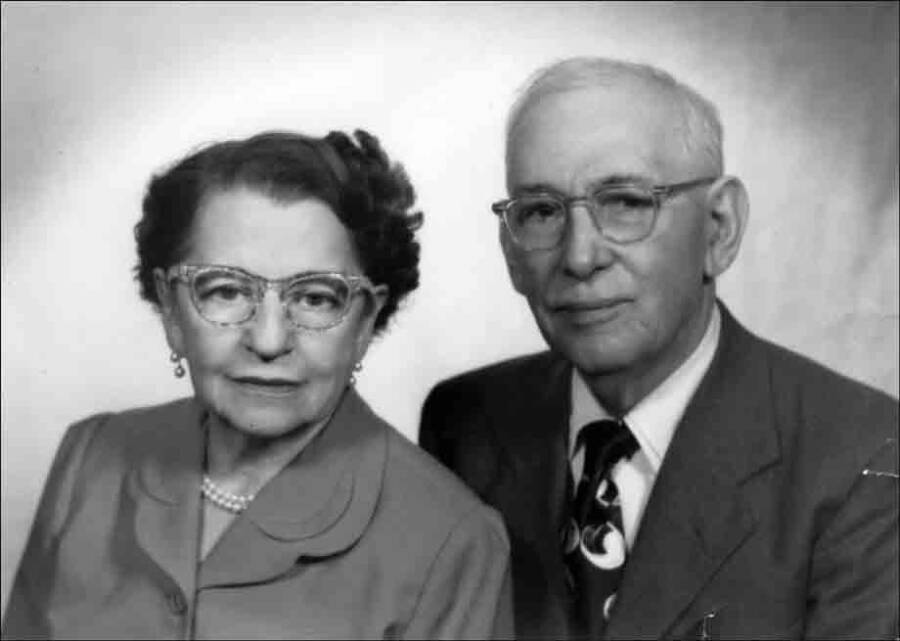
Texas Historical AssociationRepresentative José Canales pictured with his wife.
Canales appeared before the Joint Committee of the Senate and the House in the Investigation of the Texas State Ranger Force in 1919, bringing forth 19 charges against the Texas Rangers for racial violence.
During the proceedings, Canales mentioned that Frank Hamer had confronted him over the investigation in December 1918. He also accused Hamer of stalking and threatening him, saying, “his presence was made known to me.”
After Canales reported this threat, William W. Sterling, a future Texas Rangers captain, defended Hamer’s record — though he admitted that Hamer usually followed through on his threats.
Still, this incident did little to slow Hamer’s career trajectory, and he soon found himself a senior captain of the Texas Rangers.
Hamer’s Final Years As A Ranger
Over the course of the next decade, Frank Hamer would continue to make a name for himself, leading the fight in Texas against the Ku Klux Klan and saving 15 people from lynch mobs. He also helped put an end to what had essentially become a murder-for-hire ring started by none other than the Texas Bankers’ Association.
According to the Wilson Country Historical Society, the association had begun offering $5,000 rewards “for dead bank robbers — not one cent for live ones.” Hamer argued that all this had done was incentivize crooked cops to set up low-level, would-be robbers just to kill them and collect the reward money.
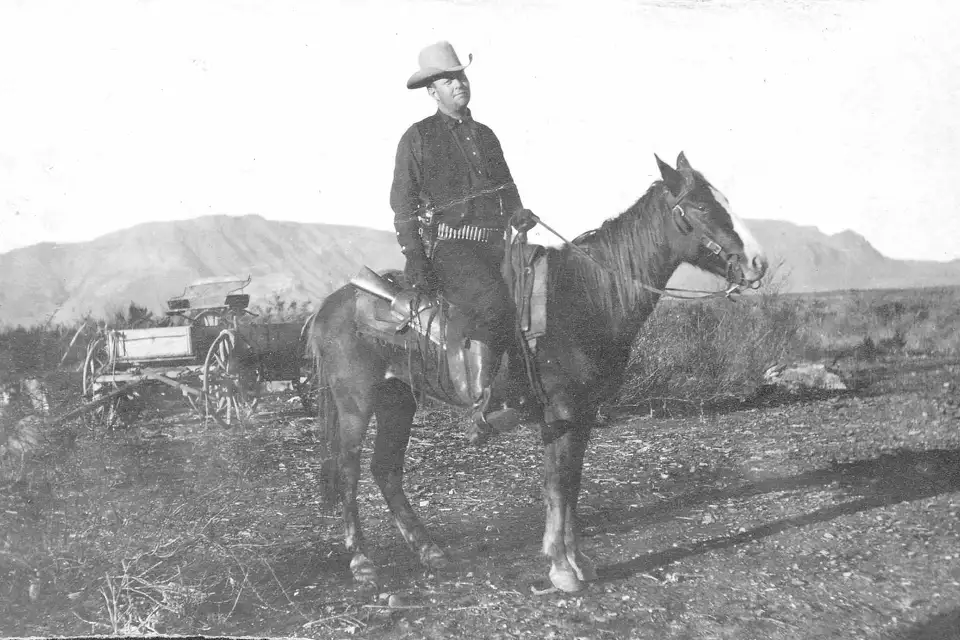
Joe Holley / Texas Ranger Hall of Fame and MuseumFrank Hamer riding his favorite horse.
The Bankers’ Association argued that “any man that could be induced to participate in a bank robbery ought to be killed.” In response, Hamer penned a thorough and impassioned exposé and handed out copies at the State Capitol. His efforts led to a massive investigation, but no punitive measures for bad actors. However, the Bankers’ Association did amend the award criteria to be for robbers “dead or alive.”
Hamer then retired from the Rangers again in 1932, later telling the press, according to the New York Times, “When they elected a woman governor, I quit.”
Of course, Frank Hamer wouldn’t stay out of the law game for long. Two criminals by the names of Clyde Barrow and Bonnie Parker had been stirring up quite the buzz in the media. Although he wasn’t a Texas Ranger anymore, Hamer was hired as a special investigator for the Texas Prison System, specifically tasked with bringing down the Barrow Gang.
Frank Hamer And Bonnie And Clyde: The Ambush That Made History
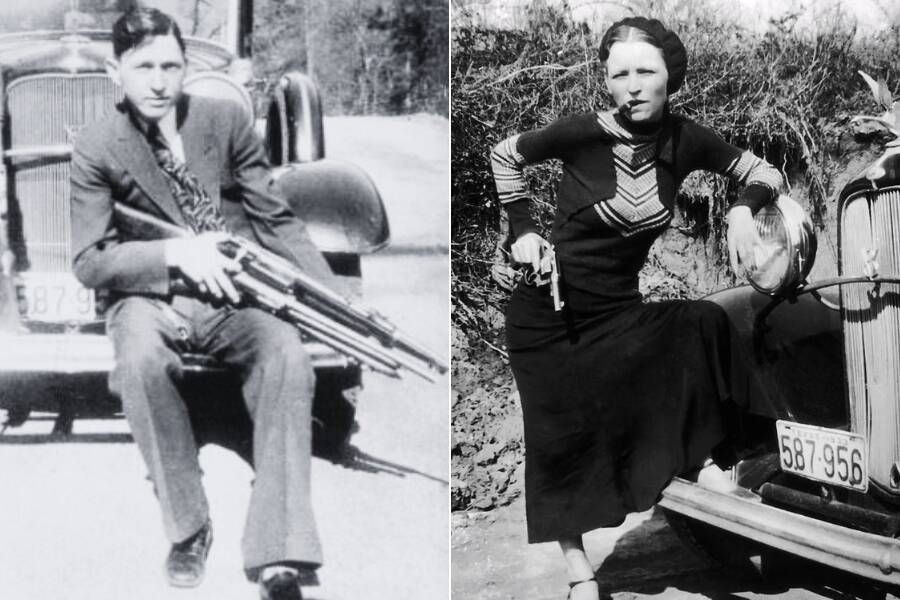
Public DomainClyde Barrow and Bonnie Parker.
By mapping out the locations of the Barrow Gang’s crimes, Frank Hamer discovered that they had essentially been moving in a large circle across the central U.S. with a few key anchor points. This way, he learned how to predict their next moves.
He had also begun to understand the way Clyde Barrow’s mind worked.
“An officer must know the habits of the outlaw, how he thinks, and how he will act in different situations,” he said, according to The Texas Rangers: A Century of Frontier Defense by Walter Prescott Webb. “When I began to understand Clyde Barrow’s mind, I felt that I was making progress.”
Then, on May 21, 1934, a posse of six officers led by Frank Hamer met on a rural road near near Gibsland, Louisiana to set up an ambush for Bonnie and Clyde.
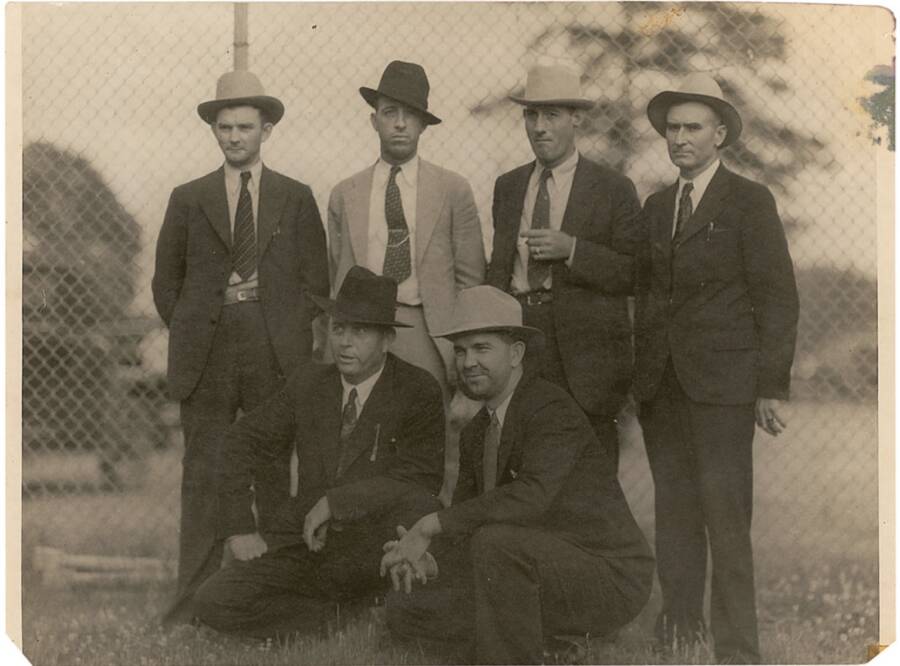
RR AuctionsFrank Hamer and the posse who took down Bonnie and Clyde.
Police enlisted the father of Henry Methvin, an accomplice of Bonnie and Clyde, to set up the ambush. He waited on the side of the road as bait, and the infamous criminals took it, slowing their vehicle to meet him. But before they could even get out of the car, the posse opened fire, killing the criminal couple almost instantly.
To ensure the pair were dead, the officers continued to rain bullets on the outlaws, firing off about 130 rounds and dotting Bonnie and Clyde’s car with over 100 bullet holes.
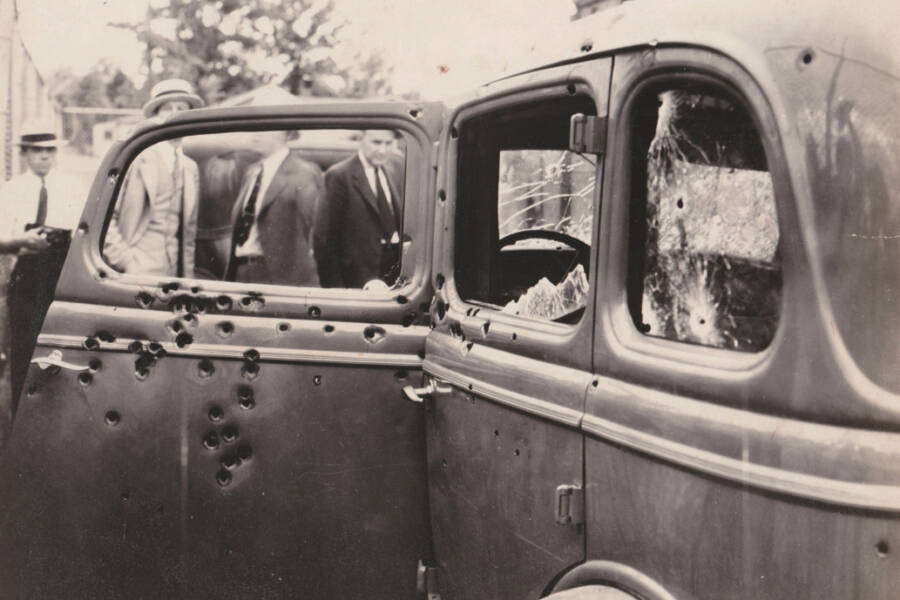
Public DomainBonnie and Clyde’s car, riddled with bullet holes.
The tale has become the subject of myriad films, books, and television shows since. But it also served as the highlight of Frank Hamer’s long career. Although he continued working, his career never quite reached the heights that it did during the Bonnie and Clyde saga.
Frank Hamer’s Final Years And Death
Throughout the tail end of the 1930s, Frank Hamer mostly worked as a strike breaker on the behalf of oil and shipping companies. When World War II began in Europe in 1939, Hamer was among the 50 retired Texas Rangers who offered to help the United Kingdom fend off the Nazi invasion (a suggestion that the United States government did not approve).

Texas Ranger Hall of Fame and MuseumFrank Hamer in his later years.
After the war, in 1948, Hamer was once again asked to pick up his Ranger duties. This time, however, he was hired by former governor Coke Stevenson during the Senate race to accompany him to the Texas State Bank in Alice to examine allegedly fraudulent ballots cast in favor of Stevenson’s opponent, Lyndon B. Johnson.
When the two arrived, Hamer’s presence alone was enough to clear out the crowds and make room for him and Stevenson to get into the bank. While the investigation ultimately didn’t win Stevenson the election, it was still a notorious event in American history.
Frank Hamer finally retired a year later. However, he was only able to enjoy his retirement for a short four years before suffering a heat stroke in 1953. While he survived, his health never fully recovered, and he died in 1955.
In the end, he was buried near his son, Billy, who died in World War II.
After learning about Frank Hamer, the man who took down Bonnie and Clyde, read about the life of Clyde’s older brother, Buck Barrow. Then, read about Blanche Barrow, Bonnie and Clyde’s anxious accomplice.





